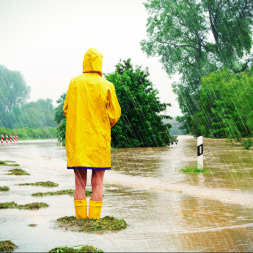How Nurse Practitioners Can Help in a Disaster
By Guest Contributor Leondria Taty, MSN, FNP-C
September is National Preparedness Month. For 2017, the theme is “Disasters Don’t Plan Ahead. You Can”. In the wake of Hurricane Harvey, this message couldn’t resonate more. There are many available resources related to the development of a personal emergency plan and emergency kit – so if you haven’t prepared one for you or your loved ones, it’s encouraged that you do. The Center for Disease Control and Prevention’s (CDC) Office of Public Health Preparedness and Response is a great place to start.
Because natural and man-made disasters have the potential to cause extreme threats to public health and well-being, proper planning and preparedness are a must. Nurse practitioners are well positioned to serve roles in disaster preparedness and relief support across all specialties.
One way to prepare individuals and families for various types of disasters is through patient education in the ambulatory care setting. Disaster preparedness education can be incorporated in many ways such as: during routine health maintenance visits, a lunch-and-learn workshop, website blog posts, patient education pamphlets and/or posters in the waiting room. Information about compiling an emergency plan can be found at ready.gov. Examples of such patient education topics include:
- Discussing plans for treatment (dialysis, chemotherapy, etc.) if the clinician or the patient are geographically displaced during a disaster
- How to obtain medication(s) and/or equipment during a disaster
- Maintenance of medication and/or equipment should the supply be disrupted
- How to create or maintain a personal health record and plan for medical record transfer
- Training a family or loved one to assume the role of an in-home healthcare provider if access to a clinician is not available during a disaster
Another way that advanced practice providers can serve is through a disaster-relief organization such as the American Red Cross or Emergency System for Advanced Registration of Volunteer Health Professionals (ESAR-VHP). Local and state public health agencies are also important sources of emergency response support. Response may be at the local level, or may involve deployment outside the local area. If deployed, transportation and lodging are usually covered by the agency. These organizations even provide free disaster preparedness and emergency response management training.
One of the most common questions that advanced practice providers have about disaster preparedness are the ways to serve. The answer is – lots! Although not an exhaustive list, the following are just a few ways:
- Disaster Action Team – provide onsite or on-call assistance for unmet disaster-related health needs that are not immediately life-threatening, or that don’t require evaluation and treatment by emergency medical services (ie: assistance with obtaining medication or medical supplies).
- Sheltering – provide health services in the shelter environment. This could include monitoring communicable illnesses, providing primary care, medication maintenance, and/or assisting with infection prevention and control.
- Disaster Mental Health – provide mental health support to disaster relief workers and those directly affected by disaster. Typically a mental health specific license is required to provide this level of support. Non-mental health professionals are valuable in providing emotional support in the form of psychological first aid.
Even if disaster-relief service isn’t of interest to you, at the very least, have an actionable plan in the event that a disaster impacts you, your loved ones, and/or your place of employment.
Have you discussed disaster preparedness with your patients?
About the Author: Leondria Taty is an advanced practice registered nurse with board certification as a Family Nurse Practitioner and as a Holistic Nurse. Her clinical experience is in public health. Leondria also works as an adjunct clinical faculty member at the University of South Alabama.

